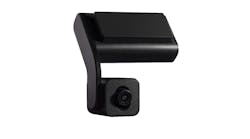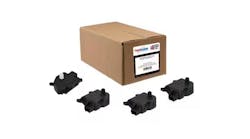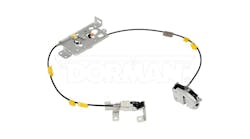Vertical integration brings various parts of manufacturing in-house, meaning parts of the product that were formerly made by other manufacturers are now made by one company. In recent years, this practice has become more prevalent in the heavy duty commercial vehicle industry. During the Technology & Maintenance Council (TMC) virtual Fall meeting, panelists discussed this shift and what it means for fleets.
Before integration
During what some might call the “golden age” of heavy duty truck production, a fleet had seemingly endless possibilities when it came to purchasing new vehicles. For one thing, there were more OEMs. Companies such as Ford and GM, for example, who now limit their commercial vehicles to light and medium duty models, manufactured heavy duty trucks alongside the likes of Mack and Peterbilt.
Once a fleet chose the manufacturer, they were offered a myriad of options with which to spec each truck. Spec proposals were very detailed back then, said Jim Cade, vice president of Fleet Services at Ruan Transportation Management Systems. Cade said fleets were able to get granular when spec’ing trucks. For example, fleets could specify items such as the fuel filter systems, brake lines, brand and length of the slack adjusters, and even the crack pressure of brake valves.
This approach to spec’ing trucks led to inefficiencies, however, especially when it came to vehicle maintenance and repair. Since the parts and components included on trucks varied widely, technicians had to learn about a larger variety of parts, components, and systems; nothing was assumed to be the same from one vehicle to the next.
“Managers had to contend with training mechanics – who weren’t called technicians then – and the more time they had to learn about components, the less time they had to work on the trucks,” said Tom Berg, author and longtime industry expert.
Complex spec’ing also made manufacturing heavy duty trucks more cumbersome – and costly. OEMs had to ensure that all components worked together to create a fully functional truck. They also had to source these parts and components, adding time and complexity to the manufacturing process.
Then, an industry shift occurred that helped ease these concerns.
Berg said that some companies began to exit the heavy duty truck industry with product lines being absorbed by stronger manufacturers, leaving fewer original equipment manufacturers (OEMs) for fleets to choose from. He also noted that in the 1980s, truck OEMs started to reduce the number of available options to reduce complexity. They created “standard” tractors which included a standardized list of equipment.
Vertical integration today
Many think of vertical integration as an integrated powertrain, but it is much more than that, said Johan Agebrand, director of product marketing at Volvo Trucks North America. Integration is facilitated by communication, he said, and that can determine how well systems work with one another.
The advanced driver assistance systems (ADAS) on today’s trucks are one example of this communication between systems. An adaptive cruise control system uses cameras, radar, and other sensors to monitor traffic in front of the truck. If the vehicle in front of the truck begins to slow down, the system recognizes that the truck needs to slow as well to maintain a safe distance. The system reduces fuel input and applies the brakes as necessary.
Integration between these systems is imperative, and easier to achieve when one manufacturer makes them all.
These systems need to be in sync in order for safety systems to work well, said Len Copeland, Detroit product marketing manager at Daimler Trucks North America. It is more difficult to achieve consistent results using components sourced from different third-party suppliers.
In a real-world instance, Cade noted that Ruan has been spec’ing collision mitigation on trucks since 2014, but recently started adding driver-facing cameras. These two systems sometimes provide conflicting information, something Cade suspects might be avoided if the OEM had control over both systems.
Agebrand said countless systems rely on integration to operate smoothly and safely. He provided other examples including downspeeding, automated manual transmissions (AMTs), driver information displays, steering systems, predictive cruise control, automated load sensing systems, over-the-air (OTA) programming, and telematics.
Fleet concerns and advantages
One potential drawback for fleets when it comes to vertical integration may be OEMs installing proprietary components, Berg said. Service and/or parts for proprietary components would be available only from OEM dealers, which could lead to delays depending on dealer inventory.
Another downside is the lack of customization available when spec’ing new vehicles. Where previously there were a multitude of options, buying a truck is starting to look more similar to purchasing a passenger car, with available equipment groups or packages which bundle options together. And, while some customization is still available, most options come from the OEM.
“I’m not a fan of vertical integration,” Ruan’s Cade said. “It takes away some of my control as a fleet manager. I like seeing my creations come to life … knowing that it was spec’d to my fleet’s requirements. I know what works best for my fleet. I don’t like being told what’s best.”
Cade acknowledged, however, that these are his personal viewpoints based on emotion. When he makes decisions for his fleet, they are based on logic, and that side of him recognizes the advantages to vertical integration.
“Standardization of offerings brings economy of scale,” Cade said.
If OEMs can provide the same components around the world, rather than just in localized economies, they can spread the development cost thereby reducing the cost per unit. This can also simplify supply chains, meaning faster procurement of parts and components.
It is important to remember that vertical integration does not mean trucks are no longer customizable.
Customers ordering a new truck can still spec it to their needs, said Charles Ganske, an engineer for Eaton Cummins Automated Transmission Technologies. Depending on what the truck needs to do, customers can spec engine size to determine power versus efficiency; transmission ratios and shift schedules to benefit acceleration versus cruising speed; axles and tires for region and application.
Ganske noted that fleets can consult manufacturer representatives to discuss their goals and needs and match those needs to appropriate powertrain configurations.




